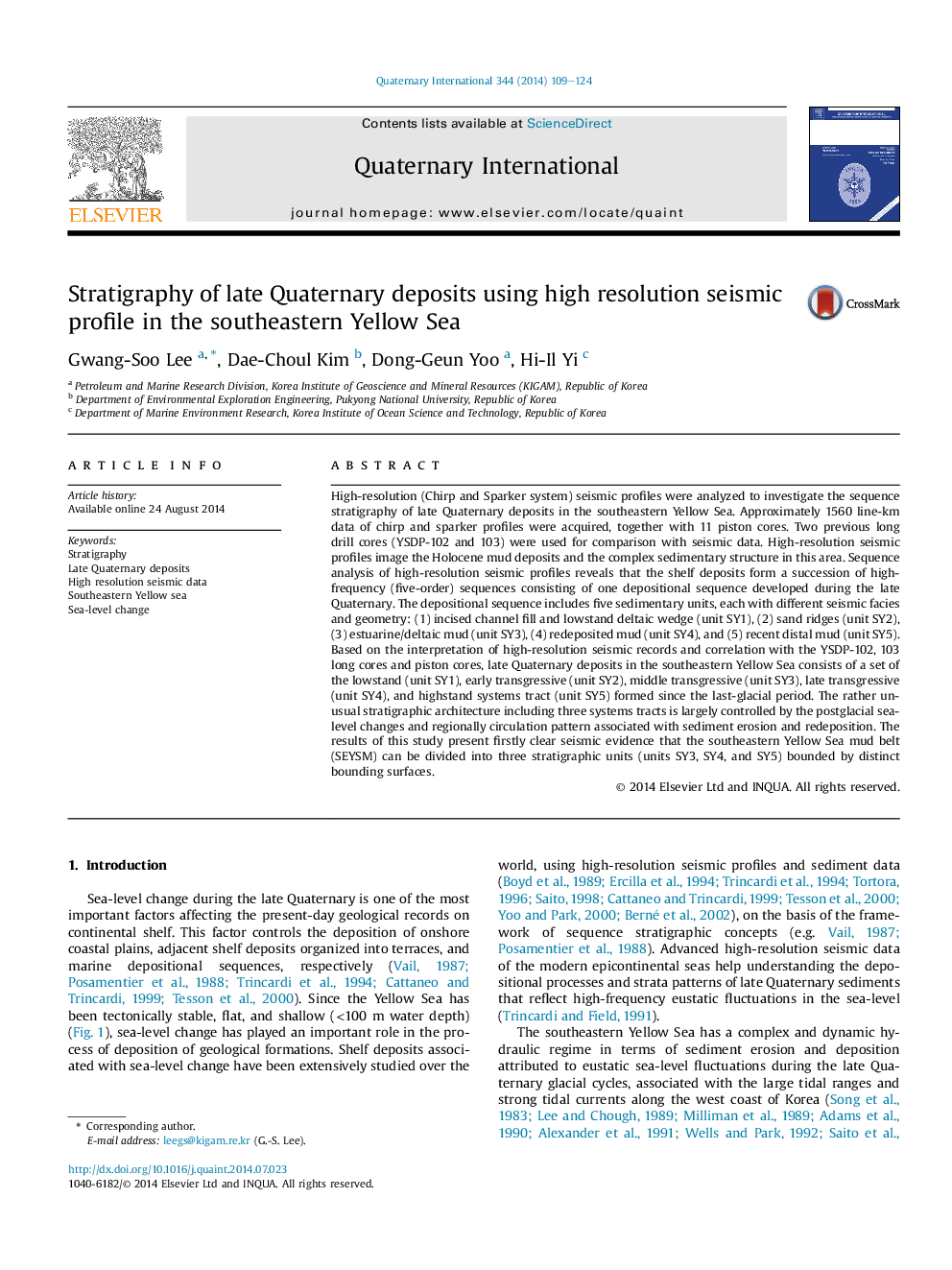| کد مقاله | کد نشریه | سال انتشار | مقاله انگلیسی | نسخه تمام متن |
|---|---|---|---|---|
| 1041209 | 1484152 | 2014 | 16 صفحه PDF | دانلود رایگان |
High-resolution (Chirp and Sparker system) seismic profiles were analyzed to investigate the sequence stratigraphy of late Quaternary deposits in the southeastern Yellow Sea. Approximately 1560 line-km data of chirp and sparker profiles were acquired, together with 11 piston cores. Two previous long drill cores (YSDP-102 and 103) were used for comparison with seismic data. High-resolution seismic profiles image the Holocene mud deposits and the complex sedimentary structure in this area. Sequence analysis of high-resolution seismic profiles reveals that the shelf deposits form a succession of high-frequency (five-order) sequences consisting of one depositional sequence developed during the late Quaternary. The depositional sequence includes five sedimentary units, each with different seismic facies and geometry: (1) incised channel fill and lowstand deltaic wedge (unit SY1), (2) sand ridges (unit SY2), (3) estuarine/deltaic mud (unit SY3), (4) redeposited mud (unit SY4), and (5) recent distal mud (unit SY5). Based on the interpretation of high-resolution seismic records and correlation with the YSDP-102, 103 long cores and piston cores, late Quaternary deposits in the southeastern Yellow Sea consists of a set of the lowstand (unit SY1), early transgressive (unit SY2), middle transgressive (unit SY3), late transgressive (unit SY4), and highstand systems tract (unit SY5) formed since the last-glacial period. The rather unusual stratigraphic architecture including three systems tracts is largely controlled by the postglacial sea-level changes and regionally circulation pattern associated with sediment erosion and redeposition. The results of this study present firstly clear seismic evidence that the southeastern Yellow Sea mud belt (SEYSM) can be divided into three stratigraphic units (units SY3, SY4, and SY5) bounded by distinct bounding surfaces.
Journal: Quaternary International - Volume 344, 10 September 2014, Pages 109–124
